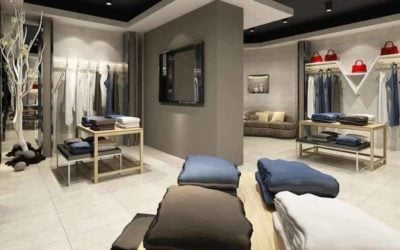What is Light Color Temperature?
Light color temperature can seem confusing. Is it about heat? Is it about colored lights? Is it more important than brightness when choosing light bulbs?
It turns out that brightness is only one measure of the illumination put out by various types of light bulbs. Colors and temperatures work together to create another way of evaluating how different LED lights will work in different situations. Combined, they become lighting color temperature — a system for measuring the whiteness of light, as expressed in units called kelvins.
Have we lost you already? No worries!
The LED experts at TCP break down the meaning of lighting color temperature, the science behind the Kelvin color temperature chart, the type of moods created by warm light vs cool light, and how to achieve a desired lighting effect by choosing the right light bulb color temperatures.
Defining Light Color Temperature
Light color temperature is not about heat. That may seem confusing — until you think about the way interior designers talk about colors. They say things like, “The brown tones in the woodwork really warm up the space,” and “the cool gray tiles make the kitchen feel fresh.”
They’re not talking about literally changing the ambient temperature in the room. They’re referring to the idea that some colors remind us of warmth, like red and yellow, while others remind us of coolness, like blue and green.
Light color temperature, by definition, is an assessment of how far a light skews toward a warmer or cooler visual effect. In other words, lighting color temperature measures how much red (on the warm end) or blue (on the cool end) is present in a non-colored source of light. These measurements are expressed in units called kelvins, denoted by an upper-case letter K.
The Science Behind Measuring Light Color Temperature
The Kelvin Scale has been the scientific community’s preferred method of measuring light color temperatures since the mid-1950s. It’s different from the scales we commonly use for weather — Fahrenheit and Celsius — in that it is based on a calculated “absolute zero,” or the coldest possible light color temperature for any matter, as opposed to more arbitrary parameters. It is named after the British physicist and mathematician who developed it from the Celsius scale, William Lord Kelvin. We denote it with an upper-case letter K after the numbers that indicate a light color temperature’s position above absolute zero.
Correlated Color Temperature Scales
The Correlated Color Temperature Scale takes the Kelvin units of measure and uses them to describe the color of light by turning the Kelvin Scale upside down. Where higher numbers indicate hotter thermal temperatures on the Kelvin Scale, they indicate cooler colors on the Correlated Color Temperature Scale. And this lines up with the way artists and designers discuss colors — and the way TCP lighting engineers talk about warm light vs cool light in terms of correlated color temperature.
Kelvin Color Temperature Scale
Less than 2000K: dim, yellowish light, close to candlelight
2000K-3000K: warm light with hints of yellow
3100K-4500K: bright, neutral white light
4600K-6500K: bright blue-white light (daylight = approx. 5200K)
6500K and up: very bright, bluish light

Choosing the Right Light Color Temperature
You already know intuitively that lighting can change the way a space feels. Just walk down the stairs into a dimly lit basement or step into a sunlight-filled atrium — the former feels cold and creepy while the latter brings about feelings of warmth and happiness, regardless of the ambient temperature in the room.
These are extreme examples, but the point is that you can use this system of light color temperature to create the mood or ambiance you desire in just about any space. Start with a baseline of daylight color temperature, which is right around 5200K, then adjust down to make a room seem warmer and cozier, or adjust up to create an energetic, vibrant vibe.
Still confused? We’ve got your back. One way to simplify the choice is to opt for LED lights with selectable light color temperature, like TCP’s Select Series Lighting. These fixtures let you change up the vibe from neutral white to vibrant white with a simple flip of the switch!
No matter which one you choose, follow these four basic rules for lighting a space well, regardless of the light color temperature of your bulb:
- Avoid relying on a single light source in most rooms. Opting for a combination of lighting types —ambient, task and accent — helps eliminate glare and shadows while supporting any space’s functionality.
- Consider the importance of high CRI lighting for spaces where color accuracy counts, like galleries, schools, healthcare facilities and retail stores.
- Opt for dimmable LED lighting options in multi-use spaces, like office meeting rooms and home game rooms, to easily adjust the ambiance from brightly cool color temperatures to softly warm color temperatures.
- Choose lighting with health benefits like reduced blue light spikes or built-in air purification to get more from your illumination than warm light vs cool light.
Then use this guide for help figuring out how to read a light bulb box and choose the light color temperature that elevates and personalizes your home or workplace with warm light vs cool light.
Warm Lighting
Light bulbs labeled in the 2000K to 3000K range on the lighting color temperature scale deliver illumination that is called “warm white.” Subtle red and yellow hues from these lights are more flattering to skin tones and clothing, making them popular in spaces meant for relaxing and socializing.
Choose 2700K light color temperatures for residential applications like bedrooms and living rooms, and for commercial spaces where coziness counts, like quiet coffee shops and intimate bistros. TCP’s Shape Filament Lamps offer a uniquely stylish look and a warm glow in both indoor and outdoor spaces. Our High Lumen Filament Lamps replace HID metal halide and corn cobs with a wide beam angle, versatile size and no ballast requirements in a wide range of lighting color temperatures.
Another option from the warm end of the Kelvin scale is TCP’s Anew Lighting, the incandescent alternative. These highly efficient LED lamps feature the familiar shape and base of outdated incandescent bulbs, so they’re an easy swap in existing fixtures. Plus, they deliver the soft, warm glow of 2850K light color temperature with perfect dimming, a high color rendering index and zero blue light spikes.
Move up to a more neutral “soft white” light color temperature of 3000K in areas where higher visual acuity is required. At home, that means the laundry room, home office and guest bath. Commercial spaces that benefit from a neutral lighting color temperature include retail boutiques and wine bars.







